According to the State Council of Higher Education for Virginia (SCHEV), there were a record 28,372 Science, Technology, Engineering, Math, and Health Professions (STEMH) degrees awarded in Virginia for the 2019-20 school year. That number represents over 33% of all degrees awarded in the state, a percentage that has increased every year since 2009. As colleges and universities continue to recruit more students into coursework in these fields, outdated facilities must be updated to meet the demand and create spaces that cater to the future of STEMH education. When building a science facility, institutes should consider the following:
Not all laboratories are created equal. Biology, physics, chemistry, health science, and multi-disciplinary laboratories each present unique challenges that require greater-than-usual attention to detail. For example, some labs may require wash-down systems, fume hoods, snorkel ducts, stainless steel-lined finishes, medical-grade copper connections, or various gas types depending on the purpose.
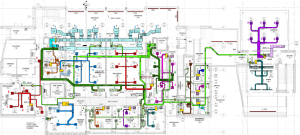
Specialized components often mean longer lead times. Items such as fume hoods, custom air-handlers, and laboratory equipment can take several months to arrive. Avoid schedule impacts by procuring these items early.
When building a state-of-the-art science facility, emphasis on the end-user experience is paramount and requires keen attention to detail. Building Information Modeling (BIM) allows for the coordination of laboratory components, MEP trades, casework, and equipment early in the preconstruction process. From the placement of lab gasses to the seating arrangement, no trade can be left unnoticed.
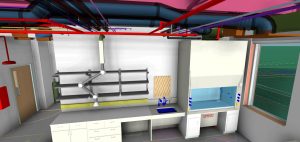
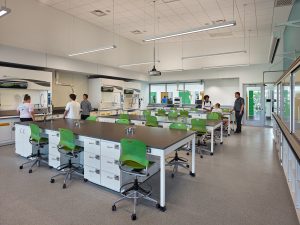
Depending on the science, multiple gases such as oxygen, nitrogen, hydrogen, or med-gases may be incorporated into the lab space. Coordinating the installation from preplanning through preconstruction and construction is essential to ensure the gas lines meet the end-use, as well as the schedule and budget. Proper coordination also ensures that gas tank placement makes for easy servicing in the future.
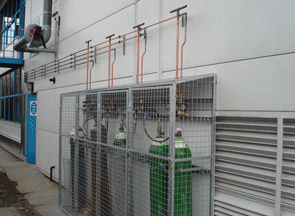
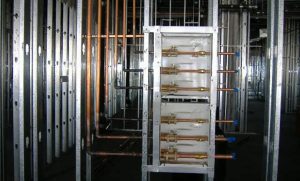
One of the main objectives of commissioning is to ensure the longest building lifecycle possible. Commissioning makes certain that all systems and assemblies such as the building envelope, electrical systems, controls, and mechanical systems are performing to their highest standard at maximum efficiency, meeting all design requirements.
As Science, Technology, Engineering, Math, and Health Profession degree programs continue to grow, institutions of higher learning must update inadequate facilities to create spaces that better accommodate STEMH education. Colleges and universities that consider these items will be equipped to renovate or build classrooms and laboratories that meet the long-term needs of students.
Previous Post Next Post